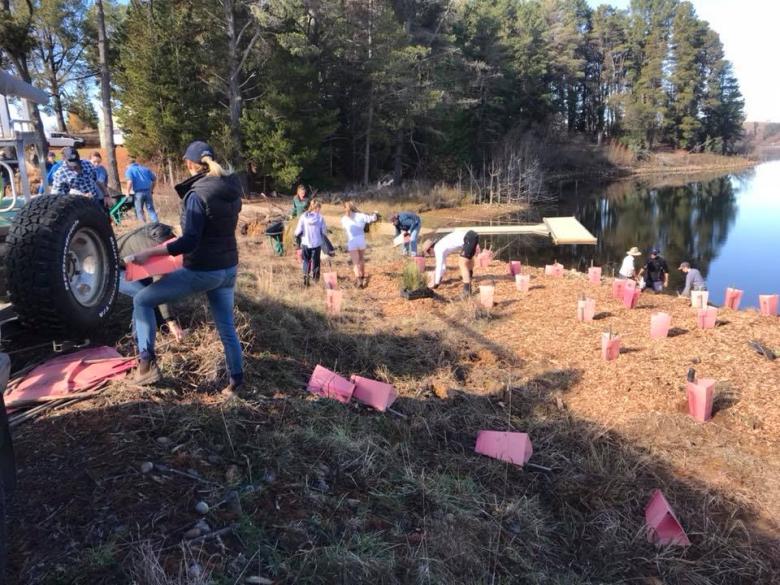The Kinross Wolaroi School Rowing Programme launched a project to restore degraded land around the Spring Creek reservoir. The city-owned reservoir, where rowers from the school come to practice, is separated from agricultural land by only a small strip of vegetation composed mostly of non-native and invasive plants. These plants consume more water than the native species, further exacerbating the effects of ongoing drought conditions, which have reduced the reservoir to 30% of its capacity. Run-off from nearby farming compromises water quality, which is a problem for local rowers as well as for two endangered duck species observed at the reservoir. In order to create a beautiful, healthy area for sport and high-quality habitat for birds, rowers presented a restoration plan to the city council for support. Following the guidance of an environmental consultant and with funding from the city, the team hosted community workdays to clear invasive species from a section of the shore and plant native plants.


